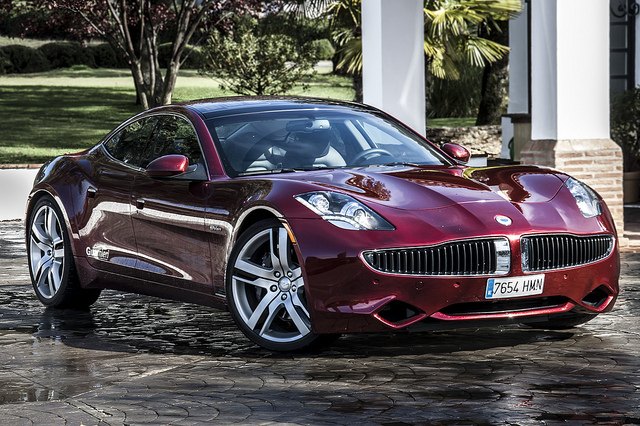Green Auto Loan and Grant Programs on Trump's Budget Chopping Block

Automakers would have to fund a larger share of future green technology projects if the Trump White House’s budget blueprint passes as written.
The administration proposes to do away with a little-used — and sometimes controversial — U.S. Energy Department loan program, as well as a grant program dedicated to spurring advanced fuel-saving technologies.
Contained in the budget blueprint is the elimination of the federal government’s Advanced Research Projects Agency-Energy program, known as ARPA-e. That initiative, created in 2007, doles out $300 million each year for environmentally friendly research initiatives.
While automakers tapped into the program, a number of Silicon Valley startups used the fund as seed money for marketable technologies. Green energy companies also received money from the program.
In light of Trump’s intent to reduce funding to the Environmental Protection Agency, as well the government’s plan to re-open the EPA’s midterm review of 2025 fuel efficiency targets, it’s not surprising the proposal has met fierce criticism. In response, the Trump administration claimed that the “private sector is better positioned to finance disruptive energy research and development and to commercialize innovative technologies.”
ARPA-e isn’t the only federal initiative poised to bite the dust, but it’s arguably the most controversial of the proposed eliminations. Also on the chopping block is the Advanced Technology Vehicle Manufacturing loan program, created in 2008. That program, unused since 2011, became a political lightning rod after low-cost loans were awarded to ill-fated Fisker Automotive and another failed startup. Taxpayers, still recovering from the recession, took a bath.
Three existing automakers received billions of dollars from the program. Ford walked away with a $5.9 billion loan in 2009, while Nissan saw $1.45 billion the following year. Also in 2010, upstart Tesla Motors claimed $465 million from the program’s $25 billion pool.
While it hasn’t been used in years, the program’s existence provides hope and opportunity to companies, argues the National Resources Defense Council. The environmental advocacy non-profit has stated the program “plays a critical role in bringing promising technologies out of the lab and into the real world, bridging a funding gap that entrepreneurs call ‘the valley of death.'”
[Source: Reuters] [Image: David Villarreal/ Flickr ( CC BY-SA 2.0)]

More by Steph Willems
Latest Car Reviews
Read moreLatest Product Reviews
Read moreRecent Comments
- Theflyersfan OK, I'm going to stretch the words "positive change" to the breaking point here, but there might be some positive change going on with the beaver grille here. This picture was at Car and Driver. You'll notice that the grille now dives into a larger lower air intake instead of really standing out in a sea of plastic. In darker colors like this blue, it somewhat conceals the absolute obscene amount of real estate this unneeded monstrosity of a failed styling attempt takes up. The Euro front plate might be hiding some sins as well. You be the judge.
- Theflyersfan I know given the body style they'll sell dozens, but for those of us who grew up wanting a nice Prelude Si with 4WS but our student budgets said no way, it'd be interesting to see if Honda can persuade GenX-ers to open their wallets for one. Civic Type-R powertrain in a coupe body style? Mild hybrid if they have to? The holy grail will still be if Honda gives the ultimate middle finger towards all things EV and hybrid, hides a few engineers in the basement away from spy cameras and leaks, comes up with a limited run of 9,000 rpm engines and gives us the last gasp of the S2000 once again. A send off to remind us of when once they screamed before everything sounds like a whirring appliance.
- Jeff Nice concept car. One can only dream.
- Funky D The problem is not exclusively the cost of the vehicle. The problem is that there are too few use cases for BEVs that couldn't be done by a plug-in hybrid, with the latter having the ability to do long-range trips without requiring lengthy recharging and being better able to function in really cold climates.In our particular case, a plug-in hybrid would run in all electric mode for the vast majority of the miles we would drive on a regular basis. It would also charge faster and the battery replacement should be less expensive than its BEV counterpart.So the answer for me is a polite, but firm NO.
- 3SpeedAutomatic 2012 Ford Escape V6 FWD at 147k miles:Just went thru a heavy maintenance cycle: full brake job with rotors and drums, replace top & bottom radiator hoses, radiator flush, transmission flush, replace valve cover gaskets (still leaks oil, but not as bad as before), & fan belt. Also, #4 fuel injector locked up. About $4.5k spread over 19 months. Sole means of transportation, so don't mind spending the money for reliability. Was going to replace prior to the above maintenance cycle, but COVID screwed up the market ( $4k markup over sticker including $400 for nitrogen in the tires), so bit the bullet. Now serious about replacing, but waiting for used and/or new car prices to fall a bit more. Have my eye on a particular SUV. Last I checked, had a $2.5k discount with great interest rate (better than my CU) for financing. Will keep on driving Escape as long as A/C works. 🚗🚗🚗


































Comments
Join the conversation
The purpose of the ATVM program was ultimately environmental. Meanwhile, fracking is making America's air cleaner because utilities are switching from coal to natural gas
Agreed. Coal will go away in the US, not because of regulation killing the industry, but because economics. if our elected officials were smart we'd be preparing that workforce for that eventuality rather than pandering to them though.